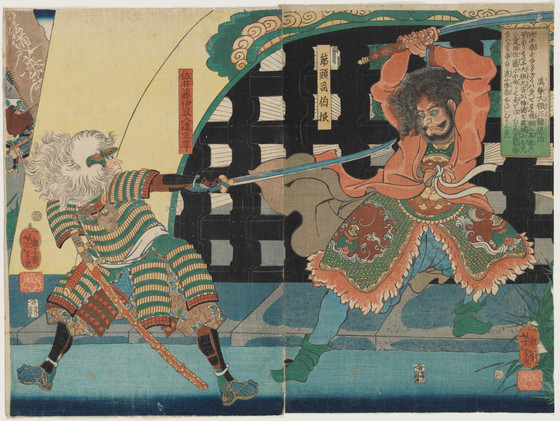Lord Mashiba Subjugates Korea

Please log in to add this item to your gallery.
View comments
No comments have been posted yet.
Add a comment
Please log in to add comments.
Please log in to add tags.
* Nearly 20,000 images of artworks the museum believes to be in the public domain are available to download on this site.
Other images may be protected by copyright and other intellectual property rights.
By using any of these images you agree to LACMA's Terms of Use.
Lord Mashiba Subjugates Korea
Alternate Title: 眞柴 大領 三韓 退治
Japan, 5/1862Prints; woodblocks
Diptych (two right panels from a triptych); color woodblock print
Left Sheet: 14 1/2 x 9 7/8 in. (36.9 x 25.2 cm); Image: 14 3/8 x 9 11/16 in. (36.6 x 24.7 cm). Right sheet: 14 1/2 x 9 3/4 in. (36.9 x 24.8 cm); Image: 14 1/4 x 9 1/2 in. (36.3 x 24.3 cm)
Gift in memory of Mr. Robert Wright from Dr. and Mrs. John Listopad (AC1996.86.1.1-.2)
Not currently on public view


